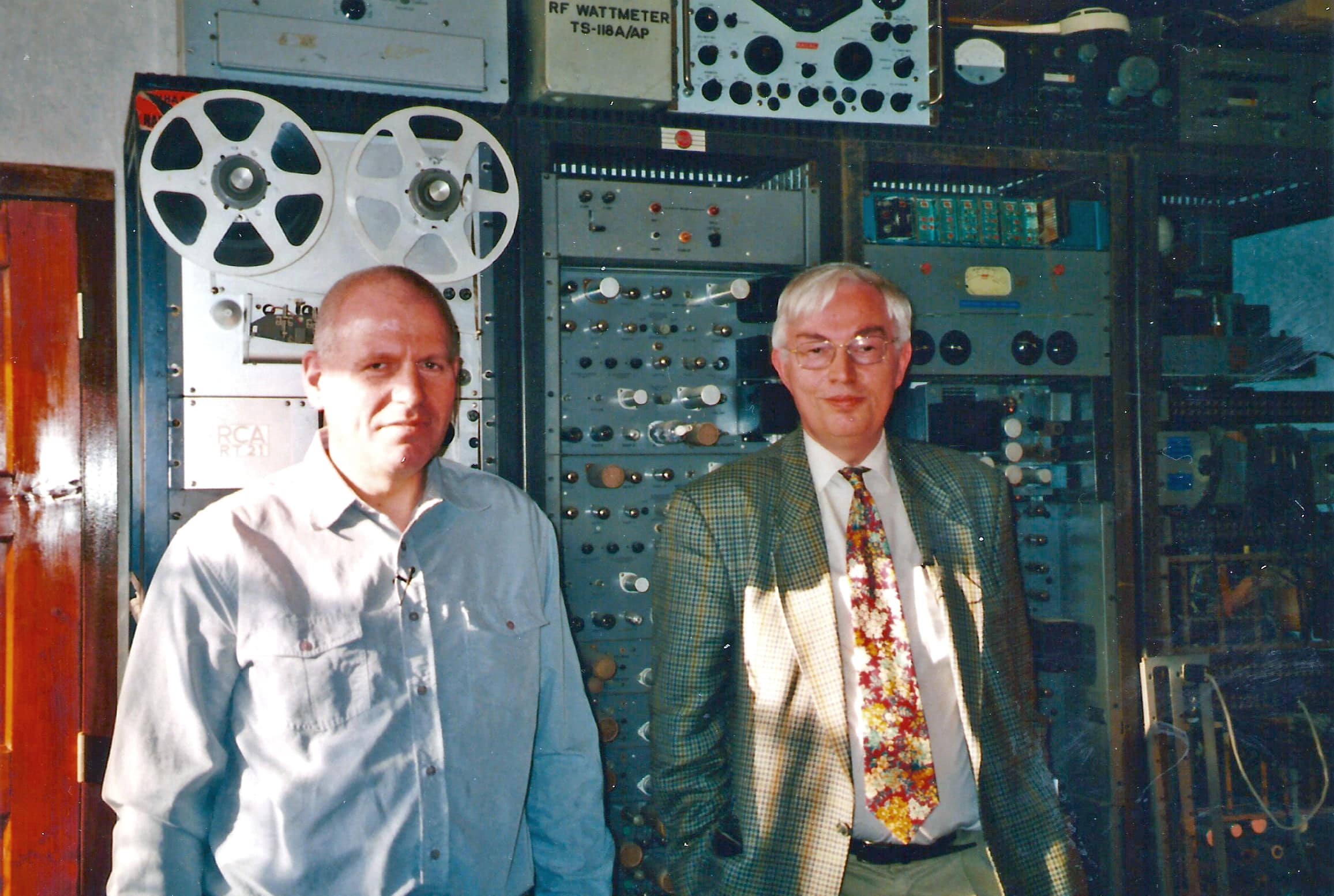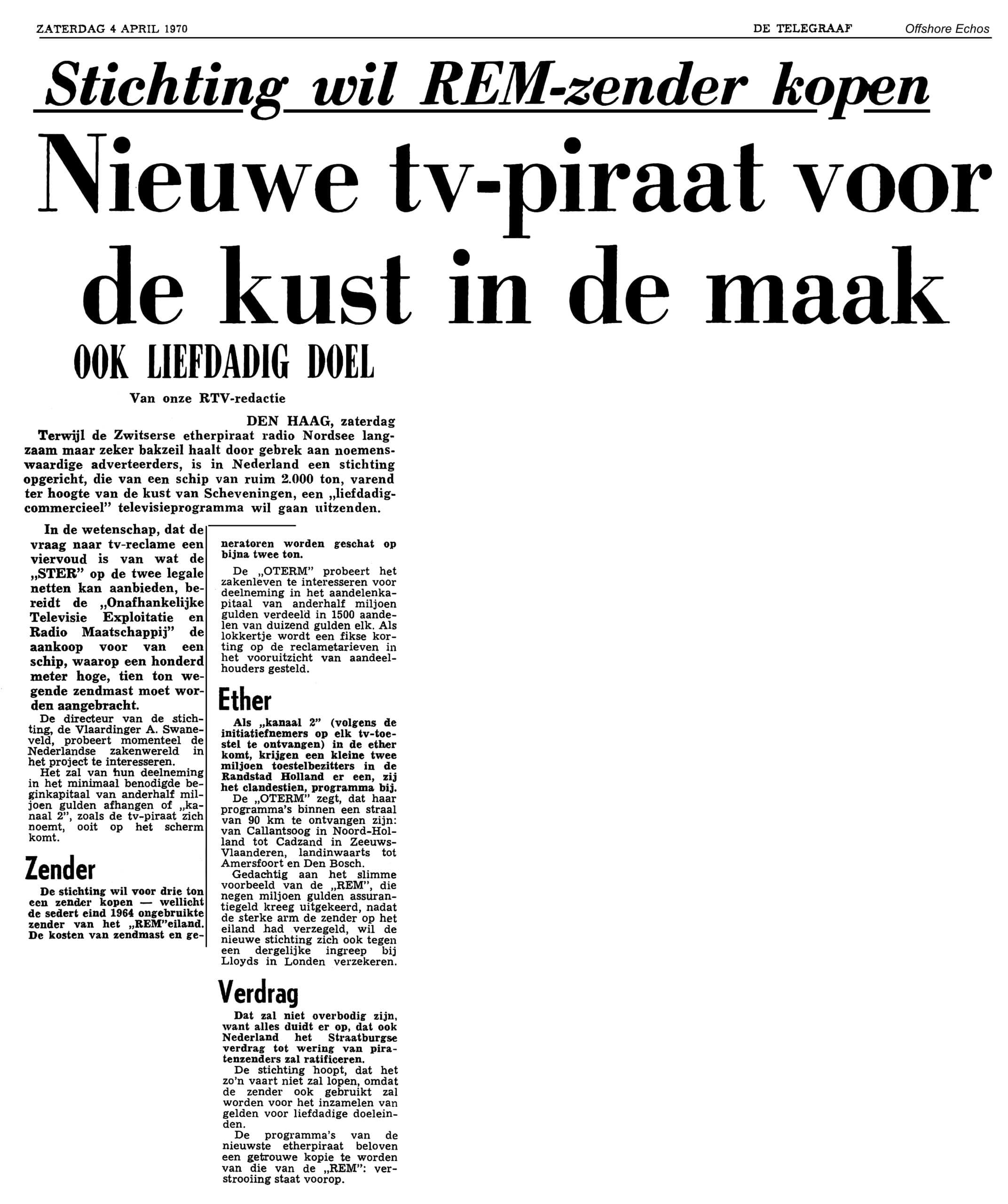In early 1970, when there was plenty of publicity in the Dutch and British press regarding the newest offshore radio station Radio Nordsee International, which later went down in history as RNI, other reports also stood out when it came to new initiatives. In early April of the year, for instance, coverage surrounding the OTERM Foundation could be found in a number of newspapers.
The abbreviation stood for Onafhankelijke Televisie Exploitatie en Radio Maatschappij and within the organisation there were plans to start broadcasting television programmes with a ship of around 2,000 tons sailing off the coast in international waters off Scheveningen.
It was argued that the demand for television advertising was four times greater than the STER could bring via the existing two Dutch television networks and thus reason enough to purchase a large ship, which also needed a transmitter mast one hundred metres long and weighing ten tons. On seeing this information, things started spinning for me.
The director of the OTERM was Arie Swaneveld, then living in Vlaardingen, who stated that he was busy approaching various businessmen in the Netherlands and had tried to get them excited about investing in the television project. Swaneveld added that at least an initial capital of 1.5 million guilders was needed to start the project. If successful, the programme would be broadcast on Channel 2 which would also become the name of the station.

So the foundation wanted to buy a television station for three tons, perhaps it was going to succeed in acquiring the equipment from former REM Island station. This had been confiscated by the government in December 1964 and was set up in one of the Dutch Domeinen’s warehouses. Possible acquisition costs for generators and transmitter mast were budgeted at 200,000 guilders.
It was also announced the same month that the OTERM wanted interested parties to participate in a share package, with each share having an acquisition value of 1,000 guilders. With the sale of the first 1,500 shares, the starting capital would be reached. Interested parties were told that purchasing a large number of these shares would yield a hefty discount on future purchases of advertising airtime.
Channel 2, should it have come on air, had a potential reach of two million television sets. Reception was guaranteed in the Randstad region and much of the west of the Netherlands. Certainly that was possible from Callantsoog in North Holland to Cadzand in Zeelandic Flanders and inland as far as Den Bosch and Amersfoort.
But more was being considered as Swaneveld also planned, once the ship was acquired, to take out hefty insurance with Lloyds in London. After all, he remembered very well how the owners of the REM Island had collected the sweet insurance amount of nine million guilders after its seizure by the government in 1964.
Despite various reports that the Dutch government was planning to ratify the Strasbourg Treaty and would thus make it impossible for the offshore radio station to work, Swaneveld had a different idea and that was that the intention of ratification would not be such a big deal. The latter came true as it would take more than four years before ratification became a reality. What also became clear not much later was that Swaneveld was given ownership of most of Radio and TV Noordzee’s equipment, which was actively used from the REM island. However, the operation of the OTERM never materialised.

